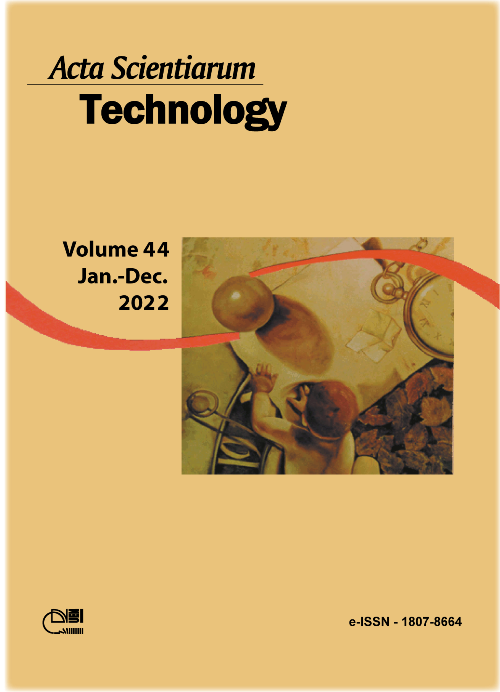Influence of culture medium on growth and protein production by Haematococcus pluvialis
DOI:
https://doi.org/10.4025/actascitechnol.v44i1.59590Keywords:
biomass; mixotrophic; nutrients; photoautotrophic.Abstract
Proteins from microalgal biomass have become promising raw materials in several industrial segments. To evaluate growth performance and protein production under different nutritional conditions, Haematococcus pluvialis was grown in different culture media: BBM, RM, BG-11, and KM2. The cultures were inoculated at 105 cells mL-1, and submitted to a temperature of 24°C, in a continous photoperiod and irradiance of 40 µmol photons m-2 s-1. The highest cell density was observed when H. pluvialis was maintained in BG-11 medium (142 ± 30 í— 104 cells mL-1), but no statistical difference was observed when comparing the results with those obtained when culturing this microalga in BBM (101 ± 14 í— 104 cells mL-1) and RM (105 ± 5 í— 104 cells mL-1) media. Also, the lowest cell density was found when cultivating H. pluvialis in KM2 medium (57 ± 9 í— 104 cells mL-1), and there was no statistical difference for doubling time, growth rate and specific growth rate results between treatments. In addition, higher protein contents in H. pluvialis were reported for RM, BG-11, and KM2 culture media at 55.1 ± 5.6, 49.3 ± 3.6 and 58.4 ± 2.8%, respectively; and lower protein content was found using the BBM medium (31.1 ± 2.9%). The highest cell density and biomass were achieved at greater nitrogen availability and a higher nitrogen to phosphorus ratio. The results suggest that H. pluvialis is a potential species for protein production, and that BG-11 is the most suitable medium for growing this microalga as it allowed the achievement of highest biomass production and protein content among the media evaluated.
Downloads
References
Downloads
Published
How to Cite
Issue
Section
License
DECLARATION OF ORIGINALITY AND COPYRIGHTS
I Declare that current article is original and has not been submitted for publication, in part or in whole, to any other national or international journal.
The copyrights belong exclusively to the authors. Published content is licensed under Creative Commons Attribution 4.0 (CC BY 4.0) guidelines, which allows sharing (copy and distribution of the material in any medium or format) and adaptation (remix, transform, and build upon the material) for any purpose, even commercially, under the terms of attribution.
Read this link for further information on how to use CC BY 4.0 properly.



















8.png)




